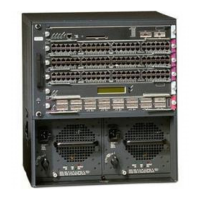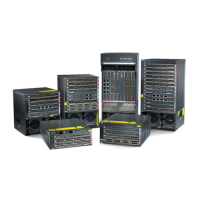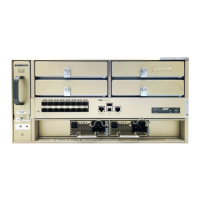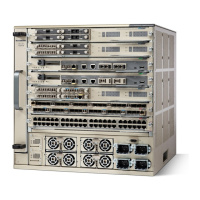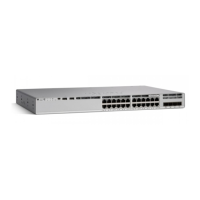D-1
Catalyst 6500 Series Switch and Cisco 7600 Series Router Firewall Services Module Configuration Guide
OL-6392-01
APPENDIX
D
Addresses, Protocols, and Ports Reference
This appendix provides a quick reference for the following categories:
• IP Addresses and Subnet Masks, page D-1
• Protocols and Applications, page D-5
• TCP and UDP Ports, page D-6
• ICMP Types, page D-9
IP Addresses and Subnet Masks
This section describes how to use IP addresses in the Firewall Services Module (FWSM). An IP address
is a 32-bit number written in dotted decimal notation: four 8-bit fields (octets) converted from binary to
decimal numbers, separated by dots. The first part of an IP address identifies the network on which the
host resides, while the second part identifies the particular host on the given network. The network
number field is called the network prefix. All hosts on a given network share the same network prefix
but must have a unique host number. In classful IP, the class of the address determines the boundary
between the network prefix and the host number.
This section includes the following topics:
• Classes, page D-1
• Private Networks, page D-2
• Subnet Masks, page D-2
Classes
IP host addresses are divided into three different address classes: Class A, Class B, and Class C. Each
class fixes the boundary between the network prefix and the host number at a different point within the
32-bit address. Class D addresses are reserved for multicast IP.
• Class A addresses (1.xxx.xxx.xxx through 126.xxx.xxx.xxx) use only the first octet as the network
prefix.
• Class B addresses (128.0.xxx.xxx through 191.255.xxx.xxx) use the first two octets as the network
prefix.
• Class C addresses (192.0.0.xxx through 223.255.255.xxx) use the first three octets as the network
prefix.
Because Class A addresses have 16,777,214 host addresses, and Class B addresses 65,534 hosts, you can
use subnet masking to break these huge networks into smaller subnets.

